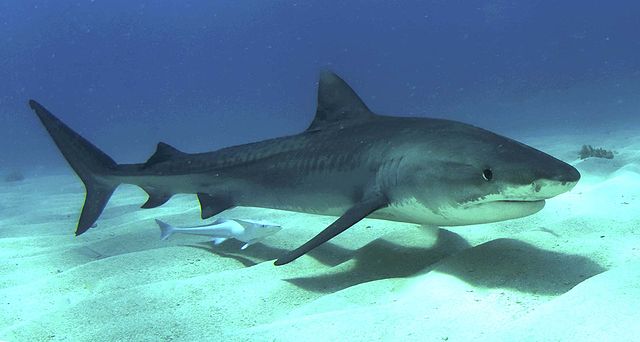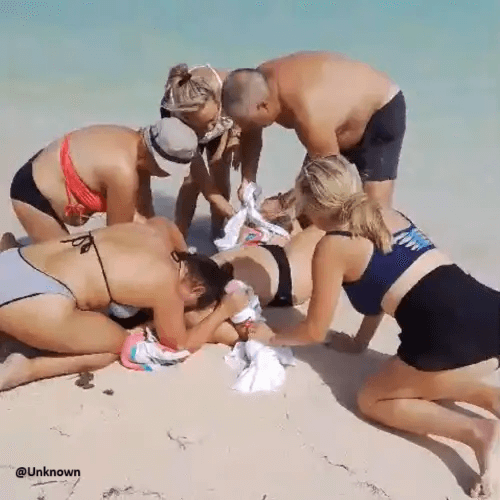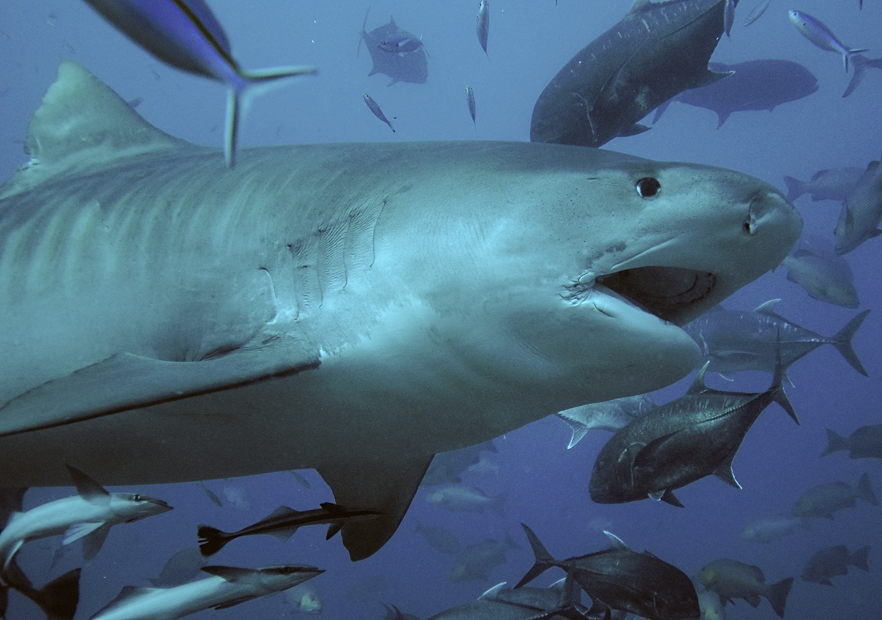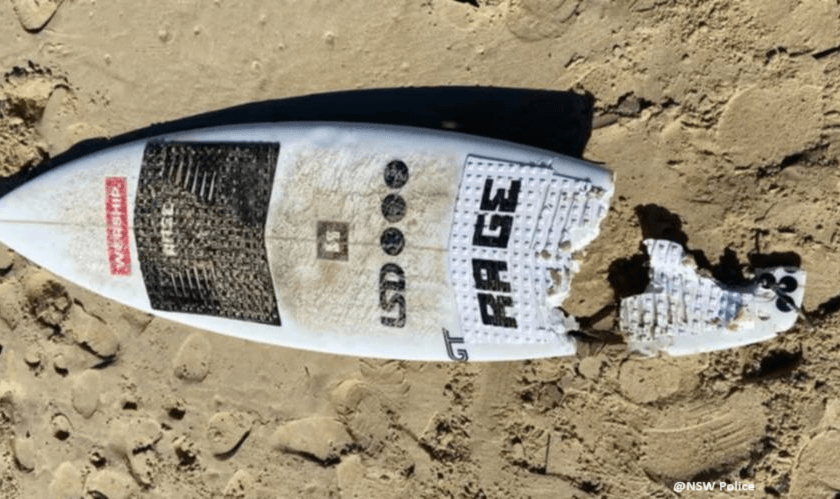One attack filmed involved Elisabeth Saure July 2 off Sah Hasheesh in the Red Sea.
The Austrian woman was snorkeling when she was attacked and lost her hand and leg to a shark. It was initially reported she was the first victim.
Video of Saure showed the moments immediately after a large shark attacked her. She can be seen struggling in the shallow water holding her severed arm and leg above the water.
At some point she either made it to a dock or a good Samaritan came to her aid as she was next videoed receiving CPR. Unfortunately, she was declared deceased on the way to the hospital.
On July 3, experts were sent to the area in search of mitigating factors. During the first few hours of the investigation a second shark-bitten body was discovered.
Roxana Donisan, 44, was visiting the area for the third time from Suceava. The Romanian woman’s body was recovered approximately 600 meters (656 yds) from the Saure location.
Based on security footage from her hotel, Donisan left her room with snorkeling gear July 1, making her the first shark attacked victim.
Donisan’s father Gheorghe said that someone filmed the final moments of his only child’s life.
“She reached the buoy (assume swim line marking deep water drop-off). There the water is a maximum of 2 meters (7 ft) , where the shark grabbed her,” Gheorghe told Monitorul. “There are pictures taken by a tourist from the boat that was just beyond the buoy. No one had the courage to jump into the water to save her.”
Local police contacted Gheorghe and his wife Rodica requesting their contact info. Moments later, Egyptian consul members called and informed the family that Roxana had reached shore and the incident had been filmed. Her body was not immediately located, and the footage of the incident has not been shared.
Travel company employees contacted the family and echoed what consulate said.
The Official investigation
A team of various experts were sent to the area of the attack to learn if mitigating factors existed. The report was translated from Arabic to English for this article.
The group interviewed several witness including a lifeguard and diving instructor who was present at the time of the July 2 shark attack (Elisabeth Saur).
The report states the area of attack was along the drop-off of a reef that is 300 meters (328 yards, 984 ft) long and features a pier extending into deeper water.
Just before 5:30 p.m. several tourists were snorkeling along the edge of the reef near a walkway when someone spotted a large shark swimming. A lifeguard was notified and went to verify if it was a shark.
Unsubstantiated reports indicate a lifeguard dismissed the initial report and stating there were no predatory sharks in the area.
Witnesses also report a lifeguard confirmed the sighting of a large shark swimming approximately 2 meters (6 feet) under the water around 20 meters (65 feet) from the walkway.
Once confirmed, the lifeguard started signaling those in the water to exit or head to the shallows.
Saur was the closest person to the shark which struck grabbing her right leg at the knee and right hand at the wrist. The shark may have grabbed the leg first and while the victim was trying to fight off the shark, her hand was taken.
GRAPHIC Video from the scene can be found here.
The report states the shark made one single bite and identified a tiger shark as the species responsible. Based on wounds left on the victim, the shark is estimated to be 4.7 meter 15 feet) long.
While the investigative team was examining the incident site, the second shark-bitten body of Roxana Donisan was found.
The investigation group could find no witness to Donisan’s shark attack, and it is unknown if they were told of the Donisan footage.

Donisan was the first victim
Security footage from Donisan’s hotel shows her leaving the hotel in her bathing suit to snorkel July 1 at 4 p.m.
The report states that over 50% of her body was missing and based on teeth marks it is most likely the same shark that attacked both women.
Photos sent to Tracking Sharks confirm the shark removed the lower half of the victim’s body.
However, the report does not state if an autopsy was performed and without an autopsy, it is still possible Donisan died of natural causes or drowning and was scavenged.
A single tiger shark responsible

According to the report, it is odd to see such large tiger sharks in the area, and that it was possible the shark was female and birthing. Female tigers will migrate from deep waters to seek nourishment to satisfy the protein needs of their embryos in their final stages before birth.
Shallow waters offer hiding places for the sharklings who can hide from larger predators.
The report also states it is possible adult sharks could see humans as predators and defensively attack to protect their young.
In addition to the birthing, the report adds that the natural fish stocks of the Red Sea have reached critical limits due to overfishing, and advised the government take steps to protect this natural resource.
The report also indicates overuse of dive sites and purposeful feeding of sharks for tourist enjoyment could lead to learned behavior from sharks because sharks may follow boats that dump food waste and sewage into the water.
An interesting theory, recommendations
One interesting theory is breaking the psychological barrier between sharks and divers.
Essentially more divers want to see sharks and some dive operators illegally bait sharks. The sharks are associating divers with food and when there are very little fish to consume, the sharks could be seeing humans as food givers leading to negative encounters.
Several measures were urged in the report including monitoring the area where the tourists were killed, banning fishing for a time, requiring bathers to stay in shallow waters and away from drop offs.
Other recommendations include:
- Require snorkelers to be guided with official trained guides.
- Implement monitoring of dive and snorkeling sites. Add GPS trackers to all tourist vessels.
- Invest in new dive sites with artificial reefs. Monitor and control fishing to allow fish stocks to rebound.
- Monitor roads leading to the sea to assure no transfer of illegally caught fish can occur.
- Begin studying and tracking sharks in the Red Sea to better understand their population and migration patterns.
It is a tragic event for the families and the witnesses.
Video sent to Tracking Sharks over the weekend shows bathers are still enjoying the Red Sea, however most everyone was in the shallows.
Both locations have been marked on the 2022 Shark Attack Map.


